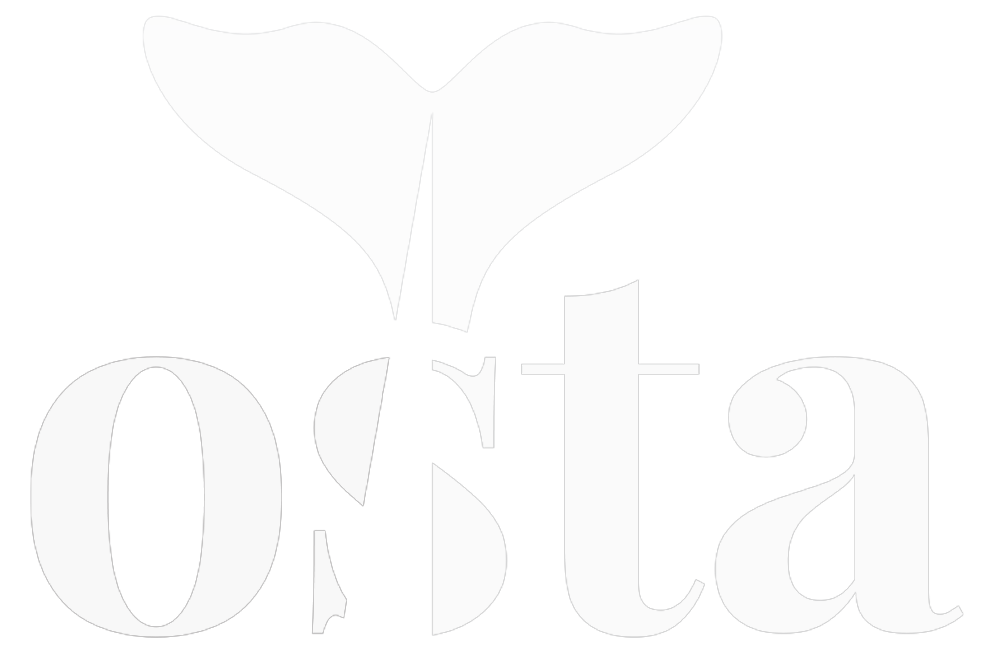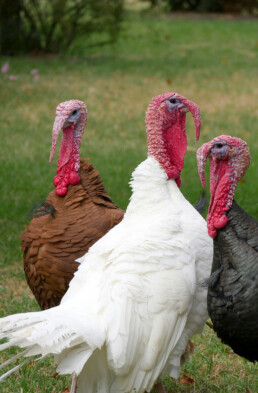Dierlijke uitdagingen overwinnen
Nieuwe Vlaamse wetgeving 2023 schiet tekort: Industrienormen voor kalkoenenwelzijn blijven ongewijzigd
Het welzijn van vleeskalkoenen in Vlaanderen is dringend aan verbetering toe, aangezien de huidige wetgeving en industrienormen tekortschieten in het aanpakken van cruciale welzijnsproblemen. Deze omvatten onder meer slechte leefomstandigheden, onduidelijke welzijnsvoorschriften en een ineffectief slachthuisinspectiesysteem.
Een kritische analyse van de nieuwe kalkoenenwetgeving uit 2023 toont aan dat ze voornamelijk bestaande industrienormen bevestigt. Hierbij worden essentiële aspecten zoals bezettingsdichtheid, buitentoegang en kweekvoorschriften over het hoofd gezien. Om het welzijn van kalkoenen in Vlaanderen daadwerkelijk te verbeteren, zou de wetgeving moeten focussen op:
- het opleggen van lagere maximale dichtheden
- het verzekeren van buitentoegang
- het verbieden van snelgroeiende rassen
- het toevoegen van specifieke regels voor:
- verrijking van de leefomgeving
- toegang tot water
- snavelkappen
- voldoende daglicht
- adequate ventilatie
- strikte controle op maximale bezetting
Het leed van vleeskalkoenen in Vlaanderen
Sinds 2019 documenteert GAIA, een Belgische dierenwelzijnsorganisatie, de leefomstandigheden van vleeskalkoenen in Vlaanderen. Hun bevindingen onthullen verschillende welzijnsproblemen :
- Poot- en mobiliteitsproblemen door de snelle groei van het ‘Hybrid Converter’ ras
- Slechte stalhygiëne, verergerd door de lange slachtcyclus van 14-18 weken
- Overbevolkte stallen die bewegingsvrijheid beperken
- Hoog sterftecijfer: tot 12% sterft voor de slachtleeftijd
- Schadelijk pikgedrag
- Verzwakte kalkoenen door intensieve kwekerijen
- Ademhalingsproblemen door constant contact met uitwerpselen [1]
Nieuwe kalkoenenwet: Industrienormen gegoten in wetgeving
Business as Usual
In 2023 werd er nieuwe wetgeving voor kalkoenen aangenomen: het Vlaamse Besluit van 22 december 2023 ’tot vaststelling van minimumvoorschriften voor de bescherming van kalkoenen’. Dit besluit, dat in 2026 van kracht wordt, legaliseert grotendeels de bestaande industriepraktijken met betrekking tot bezettingsdichtheid, (gebrek aan) buitenruimte en kweekvoorschriften en schiet tekort in het verzekeren van het kalkoenenwelzijn.
Vage Regelgeving
Enkele bepalingen in het besluit van 2023 ter verbetering van het welzijn van kalkoenen blijven onvoldoende gespecificeerd. Dit geldt met name voor strooisel, verrijkingsmaterialen en watervoorziening.
Strooisel: hoewel het besluit vereist dat kalkoenen continu toegang hebben tot droog en los strooisel, ontbreken concrete richtlijnen voor de implementatie hiervan. [2] Voor een effectieve uitvoering zou het besluit de volgende aspecten moeten opnemen:
- Een strooiseldiepte van 6 tot 10 cm garanderen, afhankelijk van het seizoen
- Dagelijks strooisel bijvullen om droogheid en losheid te behouden
- Een maximaal toegestaan vochtgehalte voor het strooisel vaststellen
Verrijkingsmateriaal: Het besluit schrijft 15 kg strobalen voor per 400 kalkoenen, maar laat ruimte voor interpretatie bij gebrek aan buitentoegang. In dat geval wordt gesteld dat ‘andere soorten verrijkingsmateriaal moeten worden gebruikt’, zonder deze materialen nader te specificeren. Deze onduidelijkheid bemoeilijkt de implementatie en handhaving. [3].
Verder vereist het besluit ‘voldoende verhoogde zitstokken en platforms’ in de stal, maar mist het cruciale details. Dit geldt vooral voor de voorzieningen voor kalkoenen ouder dan vier weken en de specificaties van platforms voor zowel jongere als oudere kalkoenen. [4]
De suggestie dat ‘stro kan dienen als platform’ roept vragen op over de benodigde hoeveelheid en vervangingsfrequentie. [5] Bovendien zijn strobalen niet optimaal als platforms: kalkoenen hebben de neiging deze te beschadigen door pikgedrag, wat resulteert in verminderde zitruimte en noodzaak tot frequente vervanging. Het is belangrijk op te merken dat strobalen een andere functie vervullen dan platforms en zitstokken, en daarom niet als volwaardige vervanging kunnen dienen.
In Vlaanderen ondergaan mannelijke biggen routinematig castratie zonder adequate verdoving. Deze ingreep, uitgevoerd terwijl de big bij bewustzijn is, omvat het verwijderen van de testikels en het doorsnijden van de zaadstrengen. De big ervaart intense pijn tijdens drie cruciale momenten: bij de incisie in het scrotum, het naar buiten trekken van de testikels, en het doorsnijden van de zaadstrengen.
Hoewel 85% van de gecastreerde Vlaamse biggen meloxicam krijgt (een pijnstiller vergelijkbaar met Ibuprofen), biedt dit geen verdoving tijdens de procedure zelf. Slechts 0 tot 3% van de biggen ontvangt procaïne, een verdovingsmiddel dat in de testikels wordt geïnjecteerd. Echter, zelfs dit is ontoereikend om de acute pijn volledig te verlichten.
De toediening van verdoving is bovendien uitdagend in de intensieve varkenshouderij, waarbij vaak de vereiste wachttijden niet worden gerespecteerd. Ondanks het gebruik van pijnstillers en verdovingsmiddelen blijft het ernstige lijden van mannelijke biggen tijdens castratie een hardnekkig probleem.
Inspectiesysteem in Slachthuizen [6]
Het voorgestelde inspectiesysteem voor voetzoollaesies in slachthuizen vertoont enkele tekortkomingen. De maatregel om de stalbezetting met 10% te verminderen treedt pas in werking wanneer bij twee opeenvolgende tomen 40% van de kalkoenen ernstige voetzoollaesies vertoont.[7] Dit roept vragen op over de effectiviteit van het systeem. Daarnaast bestaan er onduidelijkheden over de praktische uitvoering en naleving van deze inspecties.
Hoewel dit besluit de eerste specifieke regelgeving voor kalkoenen introduceert, is het twijfelachtig of deze regelgeving daadwerkelijk zal bijdragen aan het verbeteren van het kalkoenenwelzijn.
Verbeterde leefomstandigheden voor kalkoenen: Noodzakelijke wetswijzigingen
Om het welzijn van kalkoenen substantieel te verbeteren, zijn er drie cruciale aspecten die aandacht vereisen. Het decreet van 2023 schiet tekort in het beschermen van kalkoenenwelzijn op deze punten. Hierna volgt een uiteenzetting van deze essentiële aspecten die aanpassing behoeven, gevolgd door aanvullende voorstellen ter verbetering:
- Bezettingsdichtheid verlagen: Huidige Vlaamse normen (52 kg per m² voor hennen en 56 kg per m² voor hanen) negeren kalkoenenwelzijn. [8] Voorstel: Waalse voorbeeld volgen met maximaal 30 kg per m² voor hennen en 36 kg per m² voor hanen.
- Buitentoegang garanderen: Kalkoenen hebben gegarandeerde toegang tot buitenruimtes nodig voor hun welzijn.[9] Het besluit van 2023 suggereert alleen buitentoegang, zonder dit op te leggen, wat onvoldoende is voor de kalkoenen. Onze minimumstandaard vereist verplichte toegang tot een wintertuin van minstens 30% van de binnenruimte, tenzij er buitentoegang is van minstens 10 m2 per dier in open lucht.
- Kweekregels aanscherpen: Verbied snelgroeiende rassen. De maximale groeisnelheden in het besluit van 2023 staan deze rassen nog steeds toe.[10] Alleen langzamer groeiende kalkoenrassen zouden toegestaan moeten worden, met een maximale groeisnelheid van 110 of 120 g per dag.
Aanvullende welzijnsverbeteringen:
Naast bovengenoemde kernpunten, zijn er diverse andere maatregelen om het welzijn van kalkoenen te verbeteren:
- Verrijking: meer verrijkingsmateriaal, met minstens één hangend en één liggend item per 200 kalkoenen, regelmatig te vervangen. Er moeten ook voldoende zitstokken en platforms – voor alle kalkoenen in de stal tegelijk – worden voorzien.
- Proactief slachthuisinspectiesysteem: de Waalse Raad Dierenwelzijn pleit voor een practievere aanpak bij het monitoren van voetzoollaesies bij kalkoenen. In plaats van in te grijpen bij een score van 80 (waarbij 40 % van de kalkoenen in twee opeenvolgende tomen ernstige laesies vertoont), stellen ze voor om al bij een score van 10 actie te ondernemen. Deze benadering vereist een meer anticiperende houding ten aanzien van dierenwelzijn, waarbij maatregelen zoals het verlagen van de stalbezettingsdichtheid eerder worden geactiveerd.
- Snavelkappen: verbieden of overbodig maken door onderzoek
- Daglicht en ventilatie: verbeter daglichtopeningen en ventilatie, zorg voor voldoende natuurlijk licht en verlaag de maximale concentraties ammoniak en koolstofdioxide.
- Water- en voedselvoorziening: stel specifieke regels op voor watertoegang, waaronder minstens 30 cm voedertrog per kalkoen en één drinknippel of trog per 12,5 kalkoenen.
- Grit/maagkiezel: leeftijdsgebonden verstrekking, overeenkomstig het advies van de Waalse Raad Dierenwelzijn.
- Maximale groepsgrootte: limiet van 2.500 dieren per compartiment.
Potentiële impact: een optimale realiteit voor kalkoenen:
255.150 dieren
255.150 kalkoenen
__
In 2018 werden er in Vlaanderen 765.452 kalkoenen geslacht.[11] Een typische ‘slachtcyclus’ voor een vleeskalkoen duurt 14 tot 18 weken. Dit betekent dat er op elk willekeurig moment ongeveer een derde van dit totaal, oftewel circa 255.150 kalkoenen, in Vlaanderen aanwezig is.
[1] GAIA-rapport, ‘Vergeten door de wetgever – het lijden van de intensieve vleeskalkoen in Vlaanderen’, december 2019.
[2] Besluit van de Vlaamse Regering tot vaststelling van de minimumvoorschriften voor de bescherming van kalkoenen, Artikel 10 (22 december 2023).
[3] Ibid. Artikel 12.
[4] Het besluit schrijft een ‘voldoende aantal’ platforms voor kalkoenen ouder dan vier weken voor. Er wordt wel een minimale oppervlakte gespecificeerd, maar een duidelijke berekening op basis van het aantal kalkoenen in de stal ontbreekt. Dit zorgt voor onduidelijkheid. Daarnaast zijn er wel specifieke regels voor zitstoklengte bij jonge kalkoenen, maar niet voor oudere dieren. Deze inconsistenties vragen om nadere toelichting. Ibid. Artikel 12.
[5] Kalkoenenbesluit (n 2) Artikel 12, Paragraaf 3.
[6] Ibid, Artikel 15.
[7] Ibid. Artikelen 15 en 7, §3.
[8] Ibid. Artikel 7, §1.
[9] Ibid. Artikel 11§2.
[10] Ibid. Artikel 8.
[11] Kalkoenenrapport (n 1).


